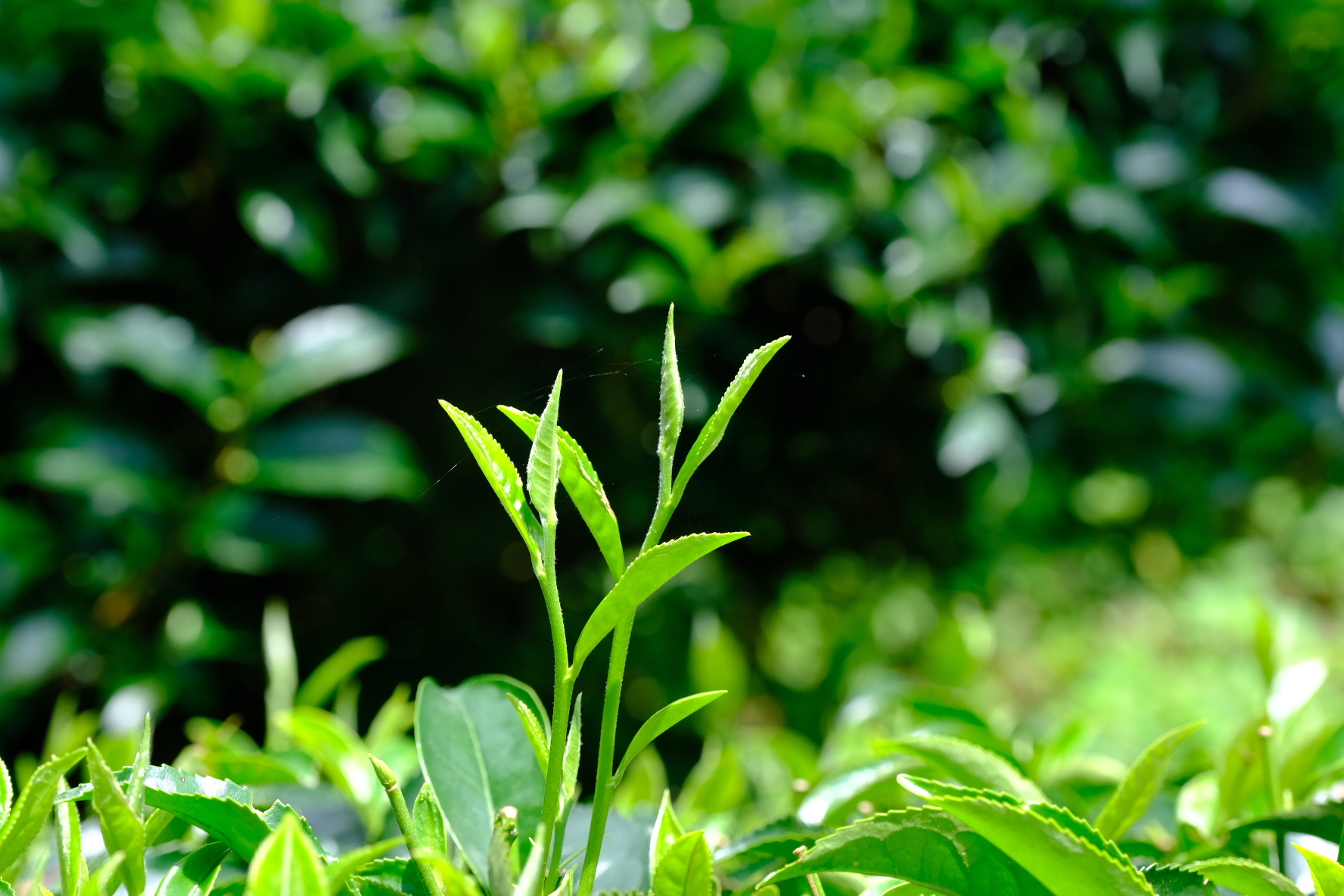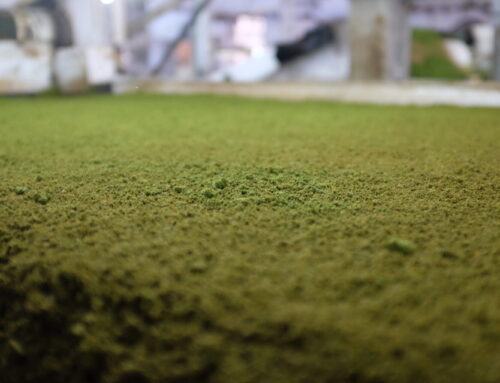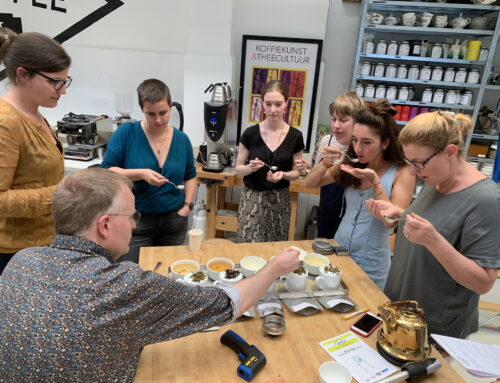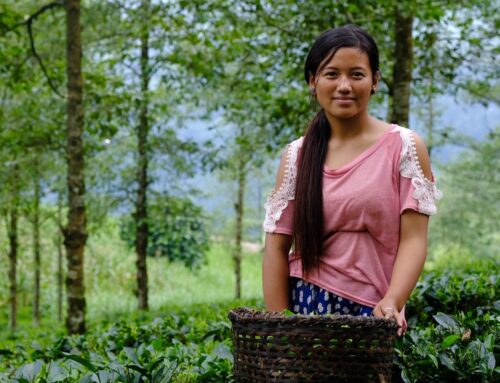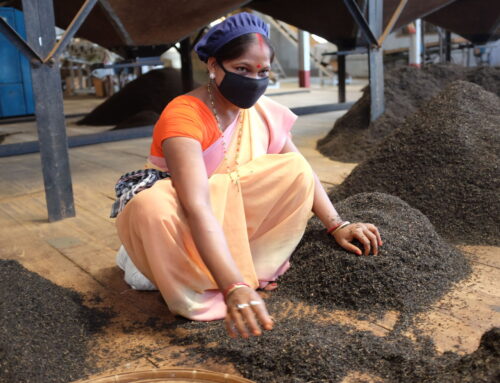What is it? Pretty simple: green leaves that are not brown or black. It’s that simple. How can you prevent green leaves from turning brown?
Apple sauce
This is perhaps best explained when we compare making tea with making applesauce.
When you take a bite out of an apple, the bite surface will turn brown over time. When you make applesauce, you prevent this browning by heating the purée. Once heated, browning will no longer occur.
It is no different with tea: by heating the leaves briefly after picking you prevent browning from occurring.
This heating can be done in various ways: in a sun, oven, wok, or in a steam cabin. The method you use has a major influence on the final taste of the tea. This way you can emphasize the nutty aromas or the spinach / seaweed aromas. In addition to the method of heating, the heating time also has a major influence on taste.
Oxidation
What actually happens when the leaf is heated?
The browning is caused by polyphenols, including oxidase and peroxidase, reacting with other polyphenols to form a substance called thearubigin. In addition to taste, this substance also gives the typical brown color to black tea. Polyphenols are partly responsible for the sour mouthfeel that some teas can give.
Let’s take a closer look at the different methods of preventing this reaction.
Sun
The leaves are heated by the sun, that’s for sure. It takes quite some time before the reaction stops, so you always get some form of oxidation. This gives the tea an almost orange color and the typical taste properties of green tea are quickly lost. Not really ideal and that is why this method is hardly used anymore.
Oven
By guiding the leaves through an oven by means of a conveyor belt, you can heat many leaves in a short time. The disadvantage is that it is a rather coarse way: some leaves will get too much heat for too long, while leaves that are further down will get too little heat. Also with this method you will get an unbalanced taste. The beautiful sweet aromas that are so characteristic of green tea will be difficult to detect in the background.
Another type of oven is more effective: the tumbler. This is a rotating drum that is heated at the bottom. The tea maker can keep a close eye on the process and intervene when necessary.
Wok
Perhaps the oldest way of making green tea, it is a very effective but also very labor-intensive method. You heat a large wok, fill it with a thin layer of leaves and press these leaves briefly against the hot walls of the wok. This is a precise job because if you press the leaves against the hot walls of the wok for too long, the juice in the leaves will boil, giving you a taste deviation. If you do not heat the leaves long enough, oxidation will still occur. Stir-frying leaves will give your cup of tea a bright yellow color and will impart nutty aromas to the tea or emphasize the nutty aromas present.
Steam
Steaming the leaves for 20-40 seconds also prevents the oxidation process. This method was developed by the Chinese and is currently used in a large number of Japanese and Korean teas. Depending on the leaf, this method will emphasize the spinach/seaweed aromas. You also get the most Umami with this method. Steaming longer gives more sweetness. In Japanese this is called Fukamushi. Literally: deep steamed. The green/yellow color in your cup is characteristic of steamed tea.
Shadow
If you are looking for more of the sweet flavors in green tea, overshadowing the tea plants for several weeks is very effective. This method is mainly used in Japan. Teas such as Gyokuro and Tencha are shaded approximately 21 days before harvest, while other varieties such as Kabuse-cha are shaded only for ten days to two weeks prior to harvest.
Shelf life
Unfortunately, green tea only remains optimally fresh for a very short time. Closed packaging of higher quality can be stored in the freezer or refrigerator. Once you’ve opened the package, it’s a matter of using up quickly. Putting it back in the freezer or refrigerator is not an option because the quality deteriorates very quickly due to the change in temperature and the danger of condensation.
Preparing green tea “I don’t drink green tea. It’s bitter” is a response I regularly receive from new students. Still, green tea can be one of the most accessible and sweet tea classes. To get these beautiful aromas in your cup, it is important that you leave out the bitter side of green tea. We have seen that astringency is caused by polyphenols. The good news is that polyphenols consist of large molecules that are difficult to dissolve in colder water. A shorter steeping time in combination or less hot water means that you leave them in the leaves and they do not end up in your cup. Success assured!

